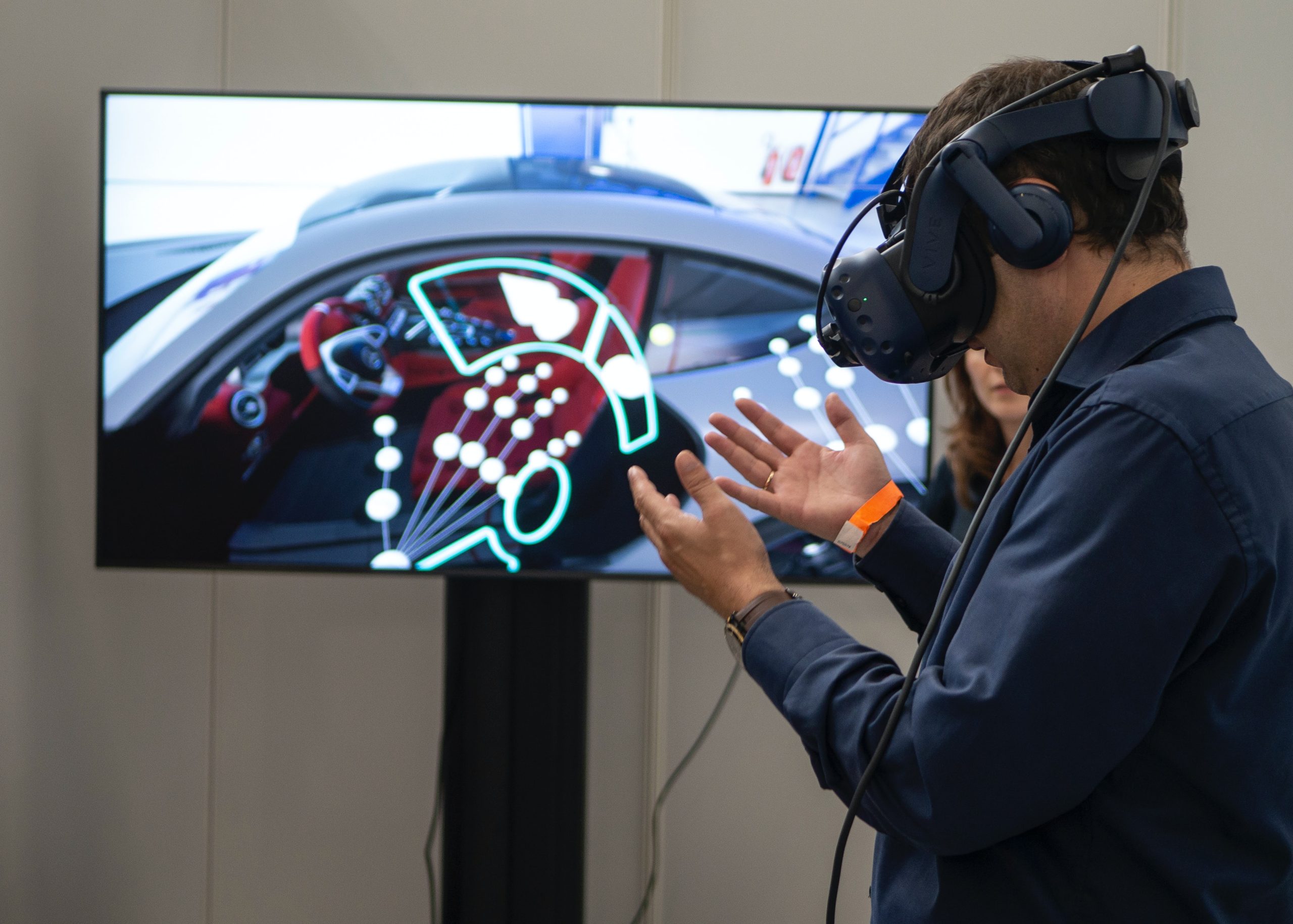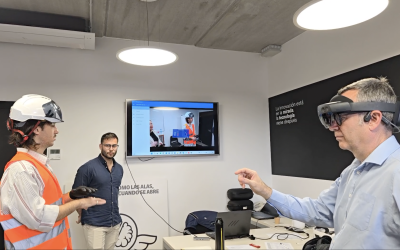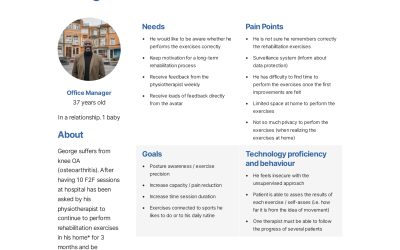Extended reality for safety and social interaction at work
Focus Area(s): Industry, safety at work, social interaction among workers


Scenario description:
AR and VR can create more immersive experiences for people at work in order to make their job safer, by providing new ways to be aware of possible hazards and receive more effective, engaging and entertaining training on safety procedures. This is to alert and prevent serious accidents provoked by the co-occurrences of different causes, which can be avoided by conscious collaboration. With VR/AR headsets, workers will be able, for example, to better understand difficult-to-grasp concepts or topics such as protocols and procedures for safety and security. It offers a great opportunity for industry to be able to make use of a variety of different options relying on extended reality experiences to provide each worker with an immersive access to relevant information, and to encourage the adoption of safer behaviours. Extended reality encompassing virtual, augmented, and mixed reality brings immersive experiences to workers no matter where they are. A XR experience can “come alive” when a worker puts on a VR headset and walks, for instance, on a shop floor. Workers can experience hard-to-conceptualise current-day topics through extended reality, such as moving around in potentially dangerous environments. XR technology will improve effectiveness and user engagement. Through an adequate design of XR contents, immersive experience seamlessly integrates several principles not present when using non-immersive contents such as better contextualization and real-time decision-making feedback, in a safe yet realistic environment for practice. The Holo-Light’s software Engineering Space AR 3S, which allows workers to visualise and work with design files including CAD in an XR environment, will be optimised and upgraded to encourage social interaction among workers to also provide them with alerts and indications about the possibility of incidents. Correct and incorrect behaviour will be simulated. Overall, it will enable designing, prototyping, quality assurance, and overall technical industrial training and education in emerging manufacturing technology scenarios also with the opportunity to not just increase the speed in acquiring new tasks or to improve industrial processes but overall, also increasing the safety for workers dealing with complex machines. Features that will be exploited in the scenario include: ● High Quality 3D Content in XR: To securely import and view all your design files for AM in XR. Visualize and manipulate even data-intensive 3D content. ● Merge the Real and Virtual: Place your CAD/engineering designs in the real world. Manipulate projected assemblies directly at their envisaged destination. ● Work on Complex Holograms: Fully manipulate your designs and assemblies. Place, rotate, adjust, resize, slice and dice. Save your work. ● Share the Experience: Collaborate with your colleagues, partners, or customers in AR. Set up local and global meetings in an XR environment.
Technical challenges:
● Wearable sensors in XR
● Low latency gaze and gesture-based interaction in XR
● Multimodal XR collaboration
● Semantic integration of virtual and physical world
● 3D acquisition with physical properties
● AI-assisted 3D acquisition of unknown environments with semantic priors
● AI-based convincing XR presentation in limited resources setups
● Hyper-realistic avatar
● Context aware avatars
Impact:
Safety in working areas is a major concern nowadays. Awareness, engagement and collaboration among workers, in possibly hazardous environments, is fundamental to prevent the occurrence of incidents. Extended reality offers unprecedented opportunities to make work areas safer. Workers will be advised and become aware of possible dangerous events while they work. Real-time interaction among workers, training through realistic simulations, and real-time updated information on the status of the work environment can significantly increase the level of safety awareness and lead to a safer industry.

Latest News
Pilot 2: demo at the last Plenary Meeting (Palermo, 20-21 May, 2025)
Last week, the 6th plenary meeting of the SUN Project consortium took place in beautiful Palermo! On this occasion, our partner Factor participated as an end user, contributing to the validation of XR (Extended Reality) technologies in real industrial...
Pilot 2 first validation phase: Valencia, April 8-10, 2025
We're thrilled to share the positive outcomes of our recent workshops focused on refining the pilot use of eXtended Reality (XR) in industrial settings. Our efforts to optimize critical tasks, particularly safety protocols for protective equipment, have yielded highly...
Pilot 2 “Industry 5.0” is approaching
We are proud to announce the upcoming Pilot 2: Industry 5.0, part of the transformative SUN initiative, which will be conducted in collaboration with FACTOR! This pilot leverages Extended Reality (XR) to redefine safety, efficiency, and training in...
Pilot 2: external stakeholders meeting
Last week we had a fantastic external stakeholders meeting related to the industrial pilot, managed by Factor Ingeniería y Decoletaje, to discuss the potential of extended reality (XR) to transform industrial processes. Experts from diverse...
Realistic Avatars in industrial sectors
Avatars are core actors in any human centered use case of the XR digital revolution. Specifically in industrial sectors, they will be the virtual representation of workers and employees from training, to performing actions in digital twins of the factory and many more...
Revolutionizing Manufacturing Safety with XR & AI
Manufacturing shop floors are inherently risky environments. At Factor Ingeniería y Decoletaje S.L., we're partnering with Holo and UPV to develop cutting-edge eXtended Reality (XR) and Artificial Intelligence (AI) solutions that prioritize worker safety and...
SUN XR User requirements
SUN user requirements have been finalised by KPEOPLE and IN2 (https://in-two.com/). The phases of co-creating user requirements went from personal interviews with the end users participating in the project (CRR-Suva, OAC, ASL-NO, FACTOR) to workshops with all partners...
Highly wearable haptic interfaces
The horizons of virtual reality are becoming increasingly more and more popular, embracing not only pure entertainment but also crucial industrial and rehabilitative sectors. Within the SUN XR project, the new challenges of virtual reality are materializing through...
Bringing Virtual Worlds to Life Just Got Easier
CNR-ISTI is revolutionizing the way we create immersive experiences in gaming and industry with a groundbreaking AI. Forget about the limitations of old tech like short-range depth cameras and slow motion capture. Their new...
First Pilot 2 External Stakeholders’ Meeting in Valencia (ES)
On February 8, the first pilot 2 external stakeholders’ meeting was held. It was a great opportunity to share SUN XR with representatives from SMEs and collect their needs and expectations about the project. The input received are important to guarantee that the...










